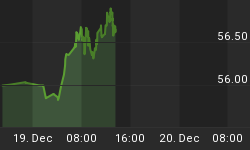Hyperinflation in Germany
 Many of you are probably too young to appreciate the full impact of the hyperinflation in Germany after WW1. It was devastating. This picture shows you the amount of paper that was equal to one silver dollar, or ¾ of one troy ounce of fine silver. After seven years of constantly accelerating inflation, the mark is finally stabilized at the rate of over 4 trillion to a U.S. dollar. The black market rate, however, was an incredible 12 trillion to the dollar at this time. The pre-inflation exchange rate for the mark was by contrast a modest 4.2 to the U.S. dollar. Can anyone say Hyperinflation?
Many of you are probably too young to appreciate the full impact of the hyperinflation in Germany after WW1. It was devastating. This picture shows you the amount of paper that was equal to one silver dollar, or ¾ of one troy ounce of fine silver. After seven years of constantly accelerating inflation, the mark is finally stabilized at the rate of over 4 trillion to a U.S. dollar. The black market rate, however, was an incredible 12 trillion to the dollar at this time. The pre-inflation exchange rate for the mark was by contrast a modest 4.2 to the U.S. dollar. Can anyone say Hyperinflation?
I have looked at this picture many times, and during one of my presentations, it suddenly hit me that this amount of paper was roughly equal to the amount of value in a silver dollar. In other words, the commodity value of the paper was worth something, because paper can be burned to give off heat and certainly this is of value.
German Currency Crisis: Burn, Baby, Burn
 Recently one of my associates sent me this photo and indeed what I had surmised was true. You can see this woman burning the notes because they did possess the value of being able to heat the room, but this was the highest and best use. The ability to be a means of final settlement (real money's function) had evaporated.
Recently one of my associates sent me this photo and indeed what I had surmised was true. You can see this woman burning the notes because they did possess the value of being able to heat the room, but this was the highest and best use. The ability to be a means of final settlement (real money's function) had evaporated.
The question for us today becomes whether this is the path that we are taking presently. I certainly must state that so far it is, but we are seeing some deflationary forces taking place in the credit markets. We must remember that after WW2, the Breton Woods agreement was signed using the U.S. dollar as the reserve currency of the world. This was done because the U.S. dollar was backed by gold, and by using the U.S. dollar as the world's reserve currency, it meant essentially that it was "as good as gold." I put quotations around that expression because I am old enough to recall hearing that expression of speech in my youth. In fact there were basically two well known expressions about the dollar. One was, "good as gold"; the other was, "sound as a dollar."
The U.S. abused this privilege and printed too much money. France caught on to this, as I am sure others did as well, but France shipped dollars back to the U.S. and took the gold, according to the contract. As this developed, Richard Nixon, President at the time, did about the only thing he could and that was to renege on the contract. This is politely referred to as "closing the gold window," but what is really meant is that the world had entered into a new era of financial mismanagement that would have dire consequences down the road.
I believe that we are now getting near the end of that road and that we are all in this together. What I mean by that is that Germany, as well as all of Europe, Asia, South America, North America -- basically the entire world -- is tied to the fate of the U.S. dollar. Since the reserve is still the dollar, as it goes down in value it obviously means that all nations that hold dollars are in trouble as well.
The implications from monetary history are not good, as these two slides have shown. The main stated function of the central bank is to maintain monetary stability, and yet this has not been the case anywhere in the world. Taking the United States as an example, the value of the "dollar" is about 3.5 cents since the last central bank was established, so in less than one hundred years the reserve currency of the world has lost almost 98% of its value. This is a fact that escapes many people because it has taken more than two generations and has happened at a slow enough pace for people to adjust their thinking, to believe that inflation is normal, that a little inflation is necessary, or that, "My wages are going up so who cares about inflation?"
Most problems are best addressed when the real problem is put into simple terms. The problem as it exists today, as it existed during the Weimar Republic, is you cannot print your way out of this mess. Or perhaps better stated, you cannot print wealth. Wealth has to be earned by the production of real goods and services that the free marketplace determines without any outside interference.
It is an honor to be,
















